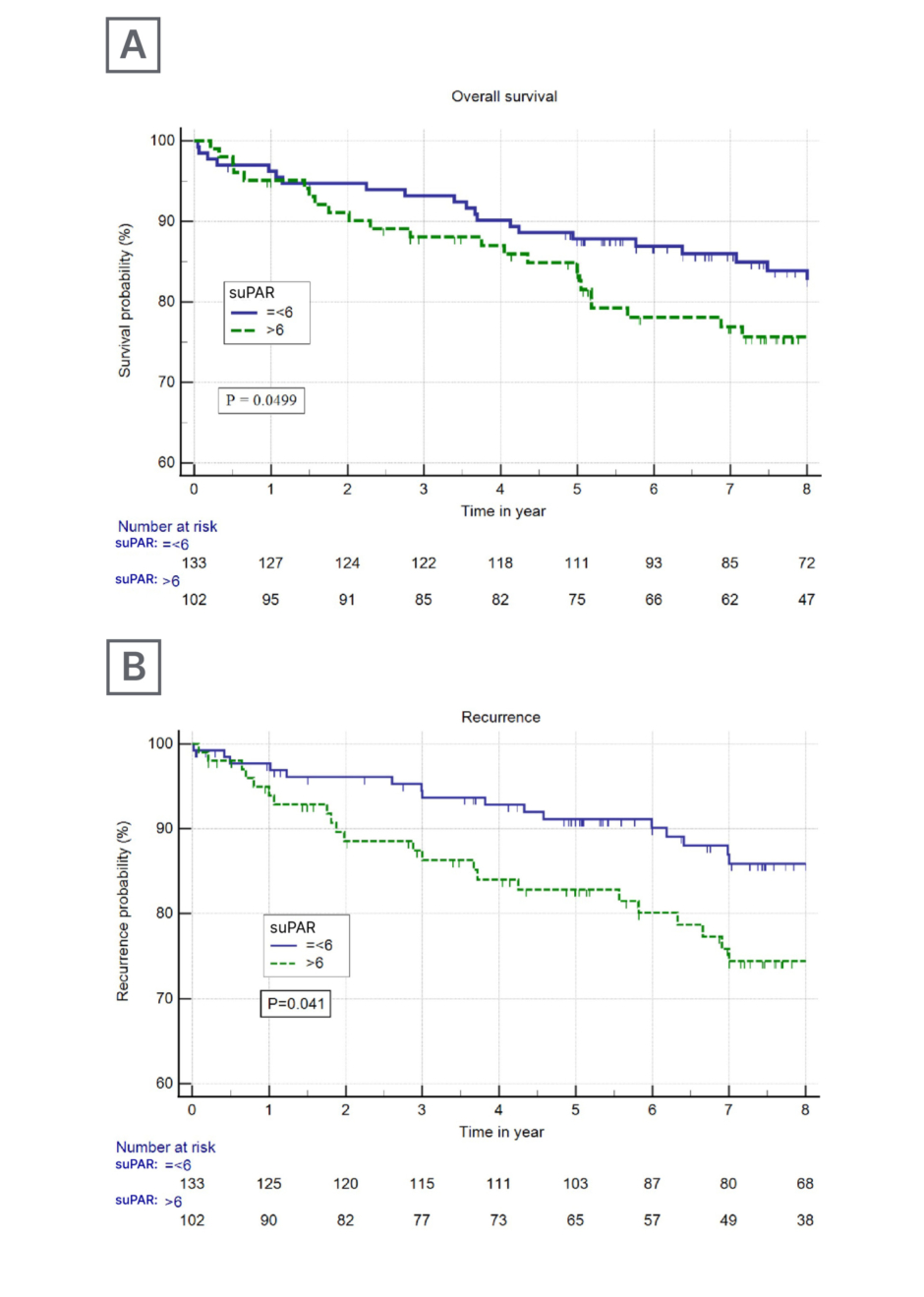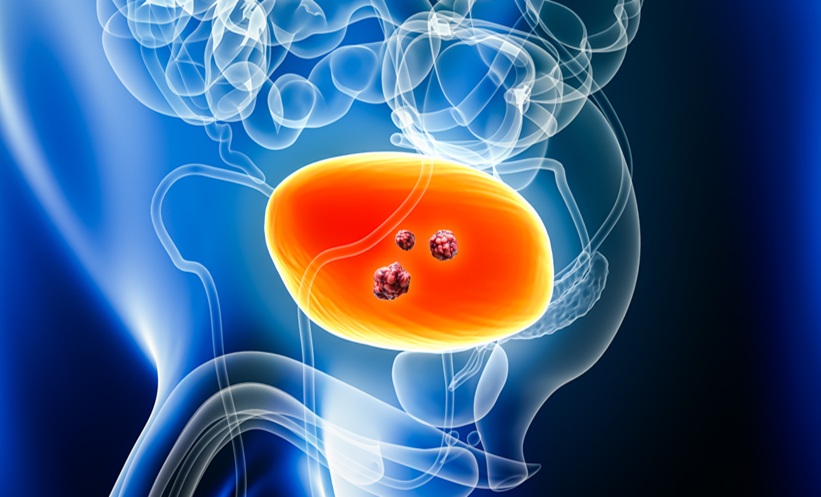BACKGROUND AND AIMS
Renal cell carcinoma (RCC) is the most common malignant kidney tumour, with clear cell RCC (ccRCC) accounting for 70–80% of all cases.1 Approximately 15–20% of patients have primary metastatic RCC at diagnosis, and 15–20% of those who receive curative treatment for localised tumours will experience recurrence within 5 years of follow-up.2 Despite standard radiological imaging follow-up protocols, 30% of recurrences are found outside these protocols, and only 10% of patients with recurrent disease have curable tumours.3,4 The search for prognostic biomarkers in RCC has led to investigations of the soluble urokinase-type plasminogen activator receptor (suPAR), a non-specific marker of systemic inflammation.5,6 suPAR has been associated with detection and survival in various diseases, including RCC.7-9 In this study, the authors’ aim was to investigate the prognostic accuracy of pre-operative plasma suPAR in predicting recurrence and survival in patients who received curative intent treatment for localised ccRCC. The authors hypothesised that an elevated pre-operative suPAR would be correlated with poorer overall survival and recurrence-free survival.
MATERIALS AND METHODS
Plasma from 235 patients with pathologically confirmed ccRCC and stored in a Danish National Biobank were identified for this study. Demographic and pathological data were extracted from patients’ electronic medical records. The level of suPAR, along with other factors such as age, gender, method of treatment, T-stage, Fuhrman grade, Charlson Comorbidity Index (CCI) score, presence of hypertension, level of C-reactive protein, level of haemoglobin, and presence of symptoms were analysed. The concentration of suPAR was measured using the commercial suPARnostic® (ViroGates, Birkerød, Denmark) assay kit and analysed through spectrophotometry. Descriptive statistics and the area under the curve operator were used to indicate the overall performance of the diagnostic test of suPAR. Analyses were performed using MedCalc® Statistical Software (MedCalc, Ostend, Belgium).
RESULTS
This study included 235 patients with ccRCC. The analysis showed that pre-operative plasma suPAR levels of ≥6 ng/mL were significant negative predictors of both overall survival (hazard ratio: 1.69; 95% confidence interval [CI]: 0.99–2.89; p=0.050) and recurrence-free survival (hazard ratio: 1.91; 95% CI: 1.03–3.57; p=0.041) (Figure 1). Furthermore, suPAR levels of ≥6 ng/mL remained a negative predictor of overall survival in multiple regression analyses (odds ratio: 5.18; 95% CI: 1.50–17.93; p=0.009). The prognostic performance of suPAR was 0.576, and adding suPAR measurements did not significantly improve the diagnostic accuracy of the Leibovich scoring system, but the combination of suPAR and T-stage had the same diagnostic performance as the Leibovich scoring system alone (area under the curve: 0.735). These findings suggest that pre-operative plasma suPAR may be a useful prognostic biomarker in predicting recurrence and survival outcomes in patients with ccRCC.

Figure 1: The overall survival and recurrence-free survival rate for patients with (A) high and (B)
low soluble urokinase-type plasminogen activator receptor.
SuPAR: soluble urokinase-type plasminogen activator receptor.
CONCLUSION
This study highlights the importance of measuring suPAR as a predictive tool in the progression of RCC, identifying a two-fold difference in recurrence risk when circulating suPAR exceeds 6 ng/mL. When adjusted for the most relevant clinical and histological parameters associated with RCC, this showed for the first time that pre-operative plasma suPAR has the potential of being prognostic for recurrence and overall survival. Pending external prospective validation and standardisation, the authors see promise in suPAR as a liquid biomarker for RCC.








